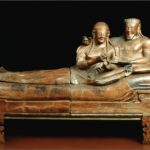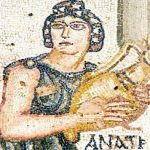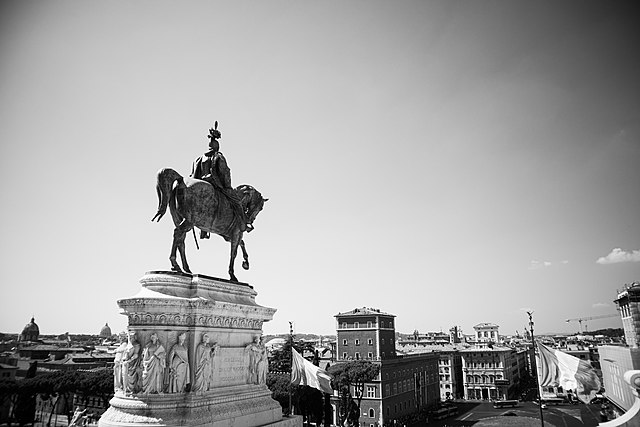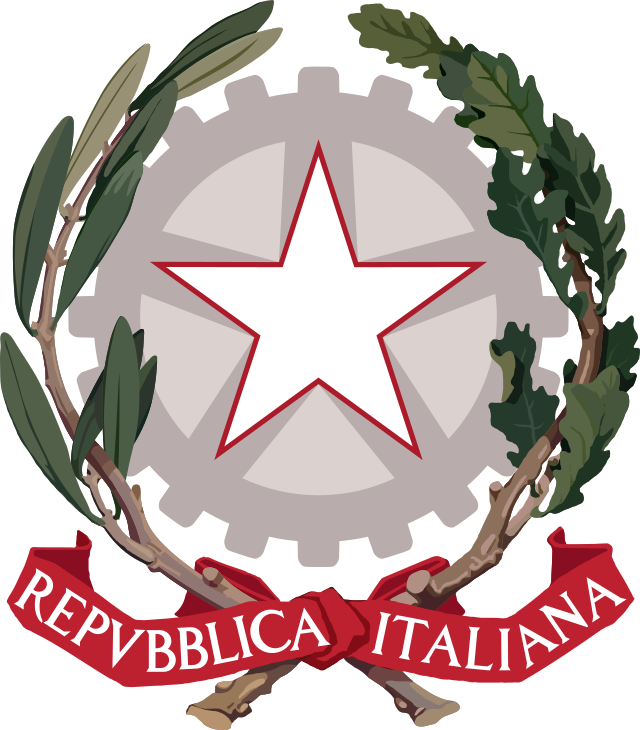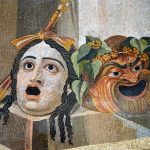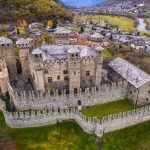(English follows)
I Sanniti: Introduzione
La storia dei Sanniti continua ad affascinare dopo più di duemila anni. I Sanniti erano un popolo italico e acerrimi nemici di Roma. Di questo popolo fiero e indomito restano scarne testimonianze e poche vestigia, nonostante per decenni avessero lasciato un’impronta della propria civiltà sulle terre che si estendono dal Gran Sasso fino ad arrivare alle aree della Magna Grecia. Questo territorio è nei giorni nostri denominato “il Sannio”. Sappiamo che i Sanniti hanno influenzato la crescita di gran parte delle popolazioni italiche.
Gli storici non sono sicuri delle origini dei Sanniti, ma pare che fossero cugini dei Romani. Infatti si ritiene che diramassero dai Sabini, uno dei primi ceppi etnici che si sono poi fusi con il ceppo che sarebbe diventato noto come il popolo romano. I Sanniti non hanno mai creato un’unica comunità politica come avevamo fatto i Romani, ma piuttosto delle tribù. Le principali erano i Carricini, i Caudini, i Frentani, gli Irpini e i Pentri che si sono uniti per fini bellici in una confederazione. “Samnium” e “Samnites” erano parole latine, e i Sanniti si riferivano a proprio paese come “Safinim” e a se stessi come “Safineis”.
I romani, nella loro spinta verso l’espansione regionale, non hanno avuto un compito facile conquistare la penisola italiana e l’isola di Sicilia. In effetti più di una volta nella loro storia antica, se le cose fossero andate in modo leggermente diverso, i romani si sarebbero trovati vinti invece che conquistatori.
Altri popoli hanno dato filo da torcere ai romani nella loro marcia verso la costruzione dell’impero tra cui gli Etruschi, i Greci e i Celti, ma i Sanniti erano i più caparbi e risoluti e consideravano sacra la libertà per cui hanno combattuto strenuamente.
Agli inizi del IV secolo a.C i Romani e i Sanniti si sono alleati e combattuti per avere l’egemonia sull’espansione naturale verso le fertili terre a sud del fiume Liri dal Volturno al Sarno. Il fattore che ha permesso all’uno di sovrastare all’altro non è facile da sapere. La storia che ci è stata tramandata si basa sul lavoro di storici asserviti al potere di Roma, tra cui Tito Livio. Si sa invece poco dei popoli soggiogati, delle loro vicende, idee politiche e religiose. Gli antichi testi parlano in modo superficiale, confuso e spesso non veritiero dei Sanniti. Infatti persino ricostruire l’assetto geografico del Sannio non è un compito semplice.
In seguito a nuovi scavi archeologici negli ultimi anni, il ritrovamento di reperti ha permesso di mettere un po’ di ordine nella storia e di dare una nuova interpretazione dell’antica società sannitica.
I Sanniti hanno vissuto in almeno quattro regioni: Abruzzo, Molise, Lazio e Campania. Ciascuna di queste regioni ha un museo dedicato ai Sanniti tra cui bisogna peregrinare non potendo per contrasti politici e geografici creare un unico museo dove conservare i reperti archeologici.
Per indicare quei territori che erano uniti per combattere l’egemonia di Roma, i Sanniti furono i primi ad utilizzare il nome “Italia”.


English version
The Samnites: Introduction
The history of the Samnites continues to fascinate after more than two thousand years. The Samnites were an Italian people and bitter enemies of Rome. Scarce evidence and few vestiges remain of this proud and indomitable people, despite the fact that for decades they had left the mark of their civilization on the lands that extend from the Gran Sasso up to the areas of Magna Graecia. This territory is nowadays called the Sannio. We know that the Samnites influenced the growth of most of the Italian populations.
Historians aren’t sure of the origins of the Samnites, but it appears that they were cousins of the Romans. Indeed it is believed that they branched off from the Sabines, an early ethnic lineage who later merged with the lineage that would come to be known as the Roman people. The Samnites never created a single polity as the Romans did, but rather tribes. The main ones were the Carricini, Caudini, Frentani, Irpini and Pentri who united for war purposes in a confederation. “Samnium” and “Samnites” were Latin words, and the Samnites referred to their country as “Safinim” and to themselves as “Safineis”.
The Romans, in their drive for regional expansion, had no easy task conquering the Italian peninsula and the island of Sicily. Indeed more than once in their early history, if things had gone slightly differently, the Romans would have found themselves vanquished rather than conquerors. Other peoples gave the Romans a hard time in their march towards empire building including the Etruscans, Greeks and Celts, but the Samnites were the most stubborn and resolute and held sacred the freedom they fought so hard for.
At the beginning of the 4th century BC the Romans and the Samnites allied and fought to have hegemony over the natural expansion towards the fertile lands south of the Liri river from the Volturno to the Sarno. The factor that allowed one to dominate the other is not easy to know. The story that has been handed down to us is based on the work of historians enslaved to the power of Rome, including Tito Livio. On the other hand, little is known about the subjugated peoples, their vicissitudes, political and religious ideas. The ancient texts speak in a superficial, confused and often untruthful way about the Samnites. In fact, even reconstructing the geographical structure of Sannio is not a simple task.
Following new archaeological excavations in recent years, the discovery of artifacts has allowed us to put some order in history and to give a new interpretation of the ancient Samnite society.
The Samnites lived in at least four regions: Abruzzo, Molise, Lazio and Campania. Each of these regions has a museum dedicated to the Samnites among which it is necessary to wander as it is not possible due to political and geographical contrasts to create a single museum in which to preserve the archaeological finds.
To indicate those territories that were united to fight the hegemony of Rome, the Samnites were the first to use the name “Italy”.
- I Vini italiani |Storia e Cultura

- Italian Formal and Informal pronouns

- Italian vs. Anglicisms and Gadda -Do we need a law to protect Italian?

- 26 Italian women who made history

- Introduction to the Samnites | I Sanniti – introduzione

- The career of the movie icon, Sophia Loren

- Let’s discover the Tremiti Islands
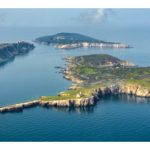
- Italy between past and present | L’Italia tra passato e presente
